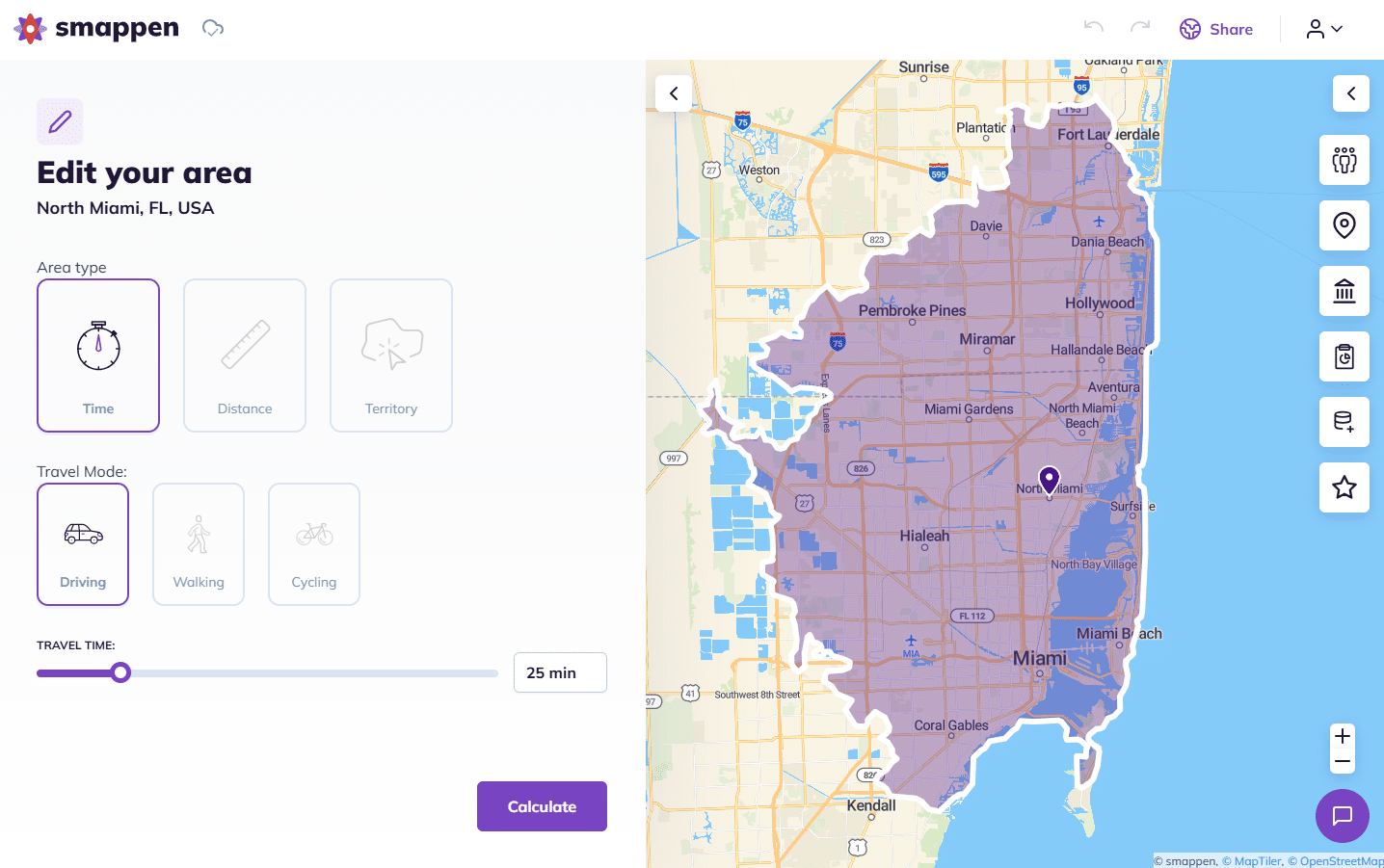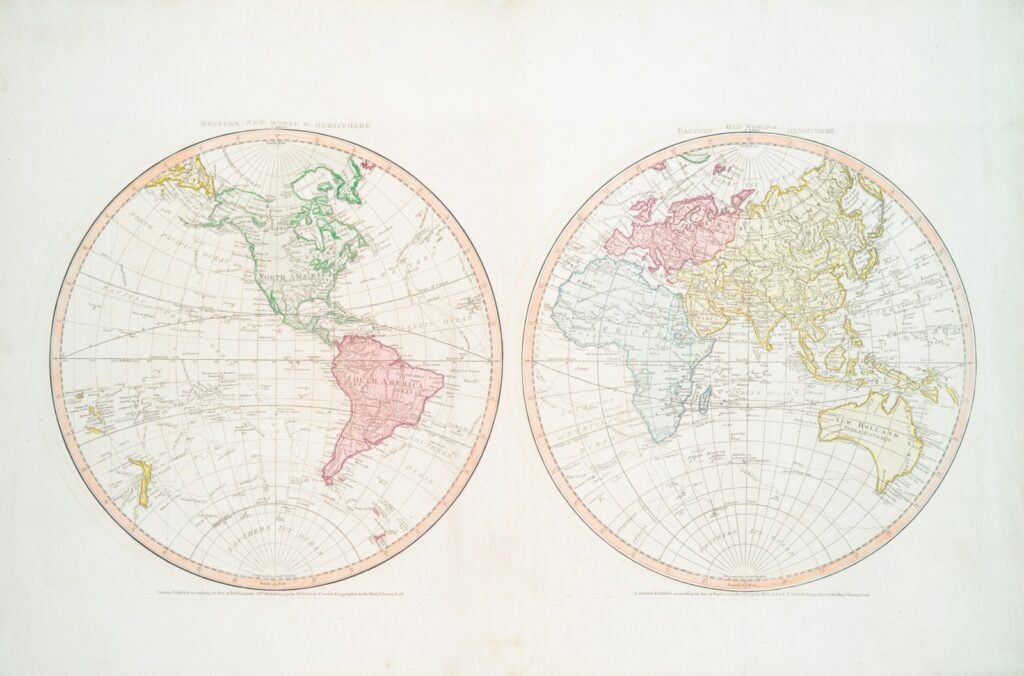Resources
How Travel Time Maps Help Businesses Choose the Best Locations

Choosing the best business location based on travel time accessibility is no longer a guessing game. Thanks to geo-intelligence platforms like Smappen.com, businesses can now calculate travel time, visualize catchment areas, and make data-driven decisions that support long-term growth.
Today, understanding where your customers, employees, and competitors are—and how long it takes to reach them—is a key strategic advantage. This article explores how travel time maps and geo-intelligence tools support smarter site selection, optimized logistics, and successful expansion planning.
What Is Geo-Intelligence?
Geo-intelligence refers to the process of collecting, analyzing, and using geographic data to support strategic decision-making. It combines location data with business metrics such as demographics, customer behavior, drive-time accessibility, and logistics flow.
Unlike traditional mapping tools, geo-intelligence provides insights beyond basic geography. It helps businesses understand how people interact with locations, what areas have the most potential, and how to plan operations in a way that maximizes reach and efficiency.
Why Is Geo-Intelligence Important for Business?
- Informed Location Selection: Opening a new branch or warehouse becomes less risky when decisions are backed by accurate data.
- Market Potential Analysis: Businesses can evaluate customer density and competition within specific travel time areas.
- Operational Efficiency: Optimizing delivery or service areas based on drive time ensures better coverage and lower logistics costs.
- Customer Experience: Understanding how long it takes customers to reach your business can directly impact foot traffic and conversion rates.
The Power of Travel Time Maps in Business Planning
One of the most impactful applications of geo-intelligence is travel time mapping. Instead of just using straight-line distances, businesses can now visualize areas based on actual drive times, walking times, or public transportation durations.
For instance, with tools available on platforms like Smappen, businesses can calculate how far customers can travel in 10, 20, or 30 minutes from a given location. This makes it easier to:
- Define catchment areas
- Analyze delivery zones
- Estimate employee commute times
- Identify underserved areas or regions with overlapping services
Site Selection Based on Travel Time: A Strategic Approach
Choosing a location isn’t just about where the real estate is cheapest or most available. It’s about how accessible that location is to your customers and employees.
1. Analyze Accessibility for Customers
Customers are more likely to visit a business that’s easy to reach. By analyzing travel time accessibility, you can:
- Identify neighborhoods with high customer density within a certain drive-time range
- Determine how location affects foot traffic and conversion
- Choose sites that are equidistant for multiple key audience groups
2. Evaluate Staff Commute
A great location for customers may be a poor one for staff. Using travel time maps, businesses can:
- Assess how long it would take potential employees to commute
- Identify areas with skilled labor within a realistic travel range
- Reduce employee turnover due to commuting challenges
3. Balance Logistics and Delivery Efficiency
For logistics-driven businesses—like delivery services, warehouses, or distribution hubs—accessibility to key highways, clients, and suppliers is essential. Travel time maps allow companies to:
- Optimize delivery zones
- Plan routes to minimize fuel costs and time
- Avoid bottlenecks by choosing sites with multiple access points
Key Geographic Factors to Consider During Site Selection
When using geo-intelligence to support business expansion or relocation, several core elements must be analyzed:
A. Demographic Data
- Population density in travel time zones
- Age, income, education levels of nearby residents
- Target audience alignment
B. Competitor Proximity
- Are competitors within the same travel time zone?
- Are you entering a saturated market or filling a gap?
C. Infrastructure and Connectivity
- Accessibility via main roads or public transportation
- Proximity to highways, transit hubs, or airports
D. Zoning and Regulatory Considerations
- Zoning laws affecting commercial operations
- Environmental restrictions or development plans
Geo-Intelligence Tools for Location-Based Decision-Making
Geo-intelligence platforms offer powerful features that help translate raw geographic data into strategic insights. Some of the most valuable tools include:
1. Isochrone Mapping
Isochrones show areas that are reachable within a given time frame (e.g., 15 minutes by car). This is useful for:
- Defining store catchment zones
- Mapping delivery areas
- Visualizing service coverage
2. Demographic Layers
Overlaying travel time maps with demographic data enables you to:
- Match store locations to target customers
- Avoid cannibalizing existing markets
- Discover new expansion opportunities
3. Custom Polygon Analysis
Draw custom shapes around areas of interest and analyze:
- Number of residents
- Number of households
- Business opportunities within that zone
4. Multi-Point Comparison
Compare multiple candidate locations by:
- Travel time reach
- Demographics served
- Overlap with existing service zones
How Businesses Use Geo-Intelligence in Real Life
Retail Chains
Retail brands use geo-intelligence to select store locations with high walk-in potential. For example, by combining foot traffic data with travel time maps, they identify areas with optimal visibility and access.
Logistics Companies
Distribution centers are planned based on optimal delivery radius using real-time traffic and accessibility data. This reduces costs, improves delivery speed, and increases customer satisfaction.
Franchises and Startups
Emerging businesses with limited resources use geo-intelligence to maximize ROI by choosing sites with strong market potential, low competition, and efficient access.
Best Practices for Using Travel Time in Site Selection
- Define Your Objectives Clearly
Are you prioritizing foot traffic, delivery times, or workforce access? Each goal may lead to different optimal locations.
- Use Multi-Layered Data
Combine travel time with other data types like demographics, commercial zoning, or competitor locations for deeper insights.
- Avoid Overreliance on One Metric
Travel time is powerful but should be used alongside other factors like rent, future development plans, and brand positioning.
- Test Multiple Scenarios
Run different scenarios (e.g., weekday vs. weekend traffic, public transport vs. car) to identify trends and risks.
- Leverage Expert Guides
Platforms like Smappen provide educational content and guides to help users interpret data effectively and apply best practices to their unique industry challenges.
Building a Location Strategy with Geo-Intelligence
Whether you’re launching a new store, opening a warehouse, or planning a service area expansion, geo-intelligence should be at the heart of your location strategy. By analyzing real travel times, population trends, and accessibility data, businesses can drastically reduce risk and boost long-term performance.
If you’re looking to dive deeper into location strategy, travel time visualization, or site analytics, explore guides and tools that go beyond static maps. Start by visiting Smappen’s platform to calculate travel time and uncover the true potential of your next location.
Final Thoughts
Geo-intelligence transforms how businesses plan, grow, and compete. With platforms like Smappen, understanding travel time is no longer just about maps—it’s about strategic insight. The ability to visually assess accessibility, analyze potential reach, and plan smarter expansions gives businesses the upper hand in an increasingly competitive market.
By integrating geo-intelligence into your decision-making processes, you gain a powerful advantage: knowing not just where your business should be—but why.

-

 Resources4 years ago
Resources4 years agoWhy Companies Must Adopt Digital Documents
-

 Resources3 years ago
Resources3 years agoA Guide to Pickleball: The Latest, Greatest Sport You Might Not Know, But Should!
-

 Resources3 months ago
Resources3 months agoTOP 154 Niche Sites to Submit a Guest Post for Free in 2025
-

 Resources3 months ago
Resources3 months ago50 Best AI Free Tools in 2025 (Tried & Tested)
